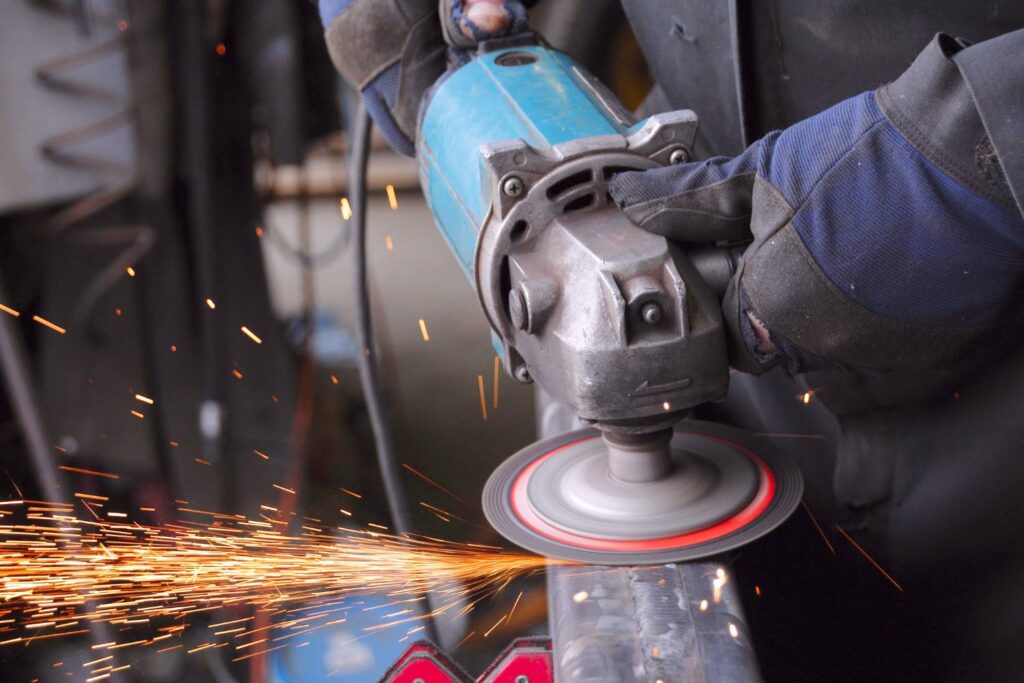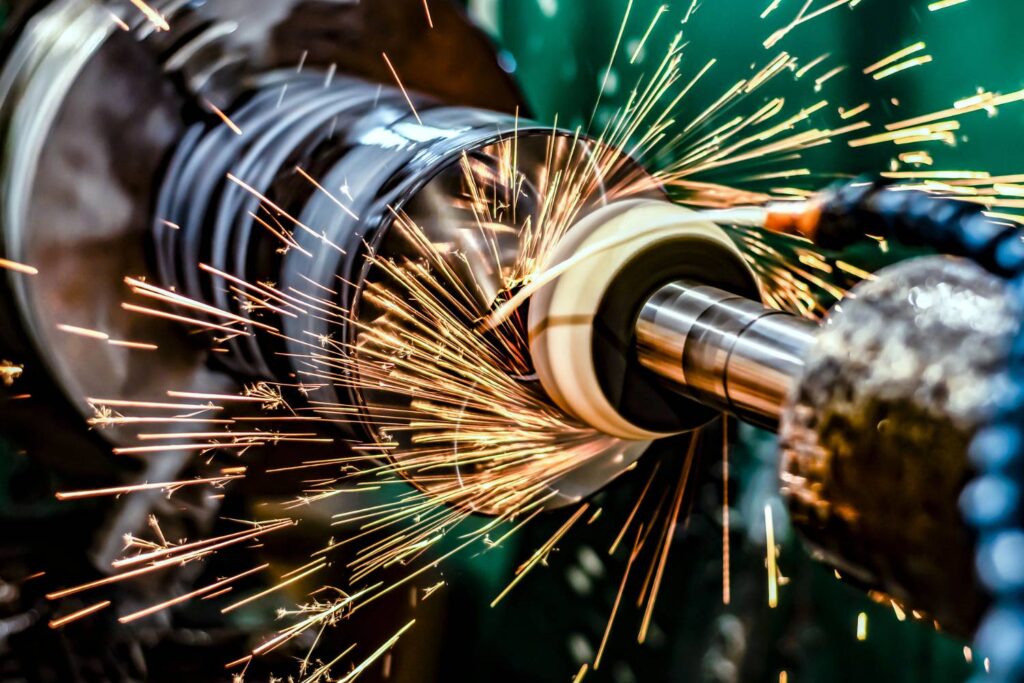Metal finishing is a critical aspect of manufacturing that significantly influences metal products’ performance, durability, and aesthetic appeal.
From enhancing corrosion resistance to achieving a visually appealing finish, metal finishing processes are indispensable across various industries, including automotive, aerospace, electronics, and construction.
In this blog, we discussed the essential metal finishing processes, their applications, and their importance in ensuring metal components meet the highest standards of functionality and longevity.
Let’s get straight to the point
Metal finishing is essential in manufacturing, enhancing the durability, performance, and appearance of metal products across various industries.
Key steps include surface preparation techniques like degreasing, cleaning, pickling, and polishing, followed by common finishing methods such as plating, anodising, powder coating, electropolishing, and brushing.
Advanced technologies like nanotech coatings, green electroplating, and graphene plating are transforming the field, offering innovative solutions for improved product quality and sustainability.
Understanding and applying the right metal finishing techniques is essential for manufacturers producing high-quality, long-lasting metal components.

Metal Finishing: A Complete Overview
Metal finishing encompasses a range of techniques aimed at altering the surface of metal components to improve their properties.
These processes enhance the metal’s resistance to environmental factors such as corrosion and wear and improve its appearance, making it suitable for various applications.
The choice of metal finishing technique is determined by the specific requirements of the component, including durability, conductivity, and aesthetic appeal.
Why Is Surface Preparation Crucial for Effective Metal Finishing?
The metal surface must be thoroughly prepared before applying any finishing technique.
Proper surface preparation is the foundation of effective metal finishing, ensuring that the applied coating or treatment adheres properly and lasts longer. The steps involved in surface preparation include:
1. Degreasing
The first step in surface preparation is degreasing, which involves removing oils, grease, and other contaminants from the metal surface.
This step is crucial because residual grease can hinder the adhesion of the finishing material, leading to suboptimal results.
Degreasing can be performed using solvents or specialised cleaning agents designed for metal surfaces, ensuring the metal is free from contaminants that could compromise the finishing process.
2. Cleaning
After degreasing, the metal surface is thoroughly cleaned to eliminate any remaining impurities. Depending on the level of contamination, cleaning methods can vary from simple wiping with a clean cloth to more intensive techniques like pressure washing or ultrasonic cleaning.
The objective is to ensure the surface is as clean as possible, providing a solid foundation for the subsequent finishing process.
3. Pickling
Pickling is a chemical process that removes oxides, scale, and other impurities that may have formed on the metal surface during previous manufacturing steps, such as hot rolling.
This process typically involves immersing the metal in an acid solution that dissolves these impurities, leaving a clean and smooth surface ready for finishing. Pickling is particularly important for metals like steel and iron, where oxide layers can significantly impact the effectiveness of the finishing process.
4. Polishing and Buffing
The final step in surface preparation is polishing and buffing, which aim to eliminate surface imperfections and create a smooth, defect-free finish.
Polishing uses abrasive materials to grind rough surfaces while buffing employs softer abrasives to achieve a reflective, glossy finish. This step is essential for ensuring that the finished product looks high-quality and performs as expected.
Which Metal Finishing Techniques Are Most Commonly Used?
Once the metal surface is adequately prepared, it can undergo various finishing techniques, each offering unique benefits depending on the intended application of the component.
Below are some of the most commonly used metal finishing techniques:
1. Plating
Plating is a process where a thin layer of metal, such as zinc, nickel, or chromium, is deposited onto the surface of a metal substrate. The primary objectives of plating are to enhance the metal’s durability, corrosion resistance, and aesthetic appeal. There are two main types of plating:
- Electroplating: This method uses an electric current to deposit the metal onto the substrate. It is widely used in industries like automotive and electronics, where durability and appearance are critical.
- Electroless Plating: This technique achieves the coating through a chemical reaction rather than an electric current. It is particularly beneficial for components with complex geometries where uniform coverage is essential.
Plating is essential in industries where the metal components are exposed to harsh environments and require additional protection to extend their lifespan.
2. Anodising
Anodising is an electrochemical process that thickens the naturally occurring oxide layer on the surface of metals, particularly aluminium. This enhanced oxide layer improves the metal’s resistance to corrosion and wear, making it more durable.
Anodising also allows for adding colour to the metal, making it a popular choice for products that require both durability and a decorative finish. Industries such as aerospace and consumer electronics frequently employ anodising due to its ability to produce a robust and visually appealing surface.
3. Powder Coating
Powder coating is a dry finishing process involving powdered paint on a metal surface. The powder is electrostatically charged and then sprayed onto the metal, which adheres to the surface.
The coated metal is then cured under heat, causing the powder to melt and form a hard, durable finish. Powder coating is known for its excellent resistance to chipping, scratching, and other forms of wear, making it ideal for products exposed to harsh conditions.
Additionally, powder coating is environmentally friendly, emitting fewer volatile organic compounds (VOCs) than traditional liquid paints.
4. Electropolishing
Electropolishing, often described as the reverse of electroplating, is a process that removes a thin layer of material from the surface of a metal component.
This technique smooths and streamlines the metal, enhancing its corrosion resistance and polished appearance. Electropolishing is particularly effective for stainless steel components, improving their cleanliness, appearance, and performance.
This process is widely used in food processing and medical device manufacturing industries, where hygiene and appearance are paramount.
5. Brushing
Brushing is a finishing technique that creates a uniform surface texture on metal components. It involves using abrasive belts or brushes to smooth out the surface, resulting in a matte or satin finish.
Brushing is commonly used on materials like stainless steel, aluminium, and brass to improve their aesthetic appeal while enhancing their resistance to wear and corrosion. This technique is often employed in architectural and decorative applications where a sleek, modern look is desired.

How Are Advanced Technologies Transforming Metal Finishing?
As technology continues to evolve, so do the techniques used in metal finishing.
These advanced processes offer new ways to enhance the performance and appearance of metal components, pushing the boundaries of what is possible in the industry.
Some of the most promising advanced metal finishing techniques include:
1. Nanotech Coatings
Nanotechnology has revolutionised metal finishing by enabling the application of ultra-thin coatings that significantly enhance the properties of metal surfaces.
These nano-scale coatings, often only a few nanometers thick, can remarkably improve durability, scratch resistance, and antimicrobial properties. Nanotech coatings are particularly beneficial in industries where weight and thickness are critical, such as aerospace and electronics.
The ability to impart these advanced properties without adding significant weight or altering the component’s dimensions makes nanotech coatings a game-changer in metal finishing.
2. Green Electroplating
Due to toxic chemicals and high energy consumption, traditional electroplating processes have raised environmental concerns. Green electroplating addresses these issues using more sustainable methods, such as water-based and dry electroplating techniques.
These advancements reduce the environmental impact of electroplating, create a safer workplace for employees, and lower operational costs for manufacturers.
Green electroplating is gaining traction as industries increasingly prioritise sustainability and seek to minimise their ecological footprint.
3. Graphene Plating
Graphene, a material renowned for its exceptional strength, flexibility, and conductivity, is making significant inroads in metal finishing. Graphene plating involves applying a graphene layer to a metal surface, imparting its remarkable properties to the metal.
This technique holds great promise for enhancing metal components’ durability, corrosion resistance, and electrical performance. Potential applications of graphene plating span a wide range of industries, including renewable energy, electronics, and transportation, where improved material properties can lead to significant advancements in product performance and efficiency.
Conclusion
Metal finishing is a key process in manufacturing, significantly enhancing the durability, performance, and appearance of metal products across various industries.
From the foundational steps of surface preparation to the application of advanced techniques like nanotech coatings and graphene plating, each process contributes to ensuring that metal components meet the highest quality and functionality standards.
As technology advances, the future of metal finishing promises even greater innovations, offering manufacturers new ways to improve their products while addressing environmental and sustainability concerns.
By understanding and implementing the right metal finishing techniques, manufacturers can significantly extend the lifespan and enhance the performance of their metal products, ultimately contributing to their success in a competitive market.

